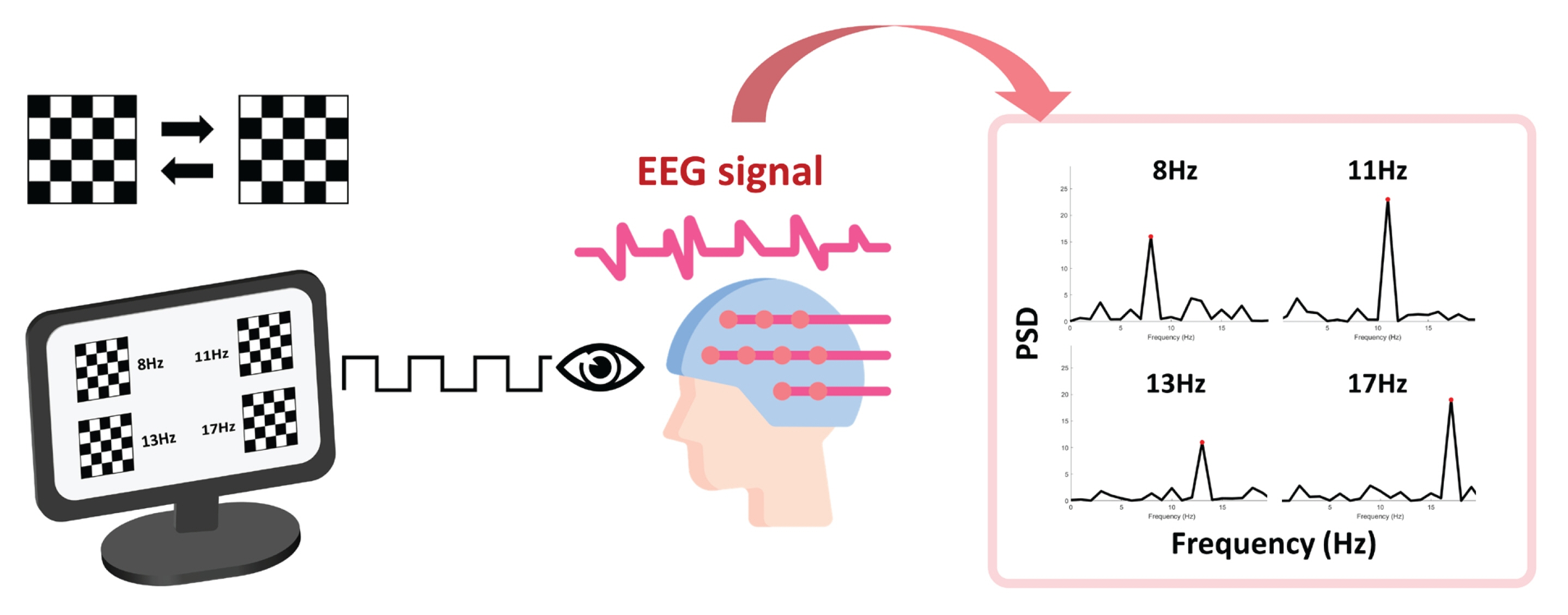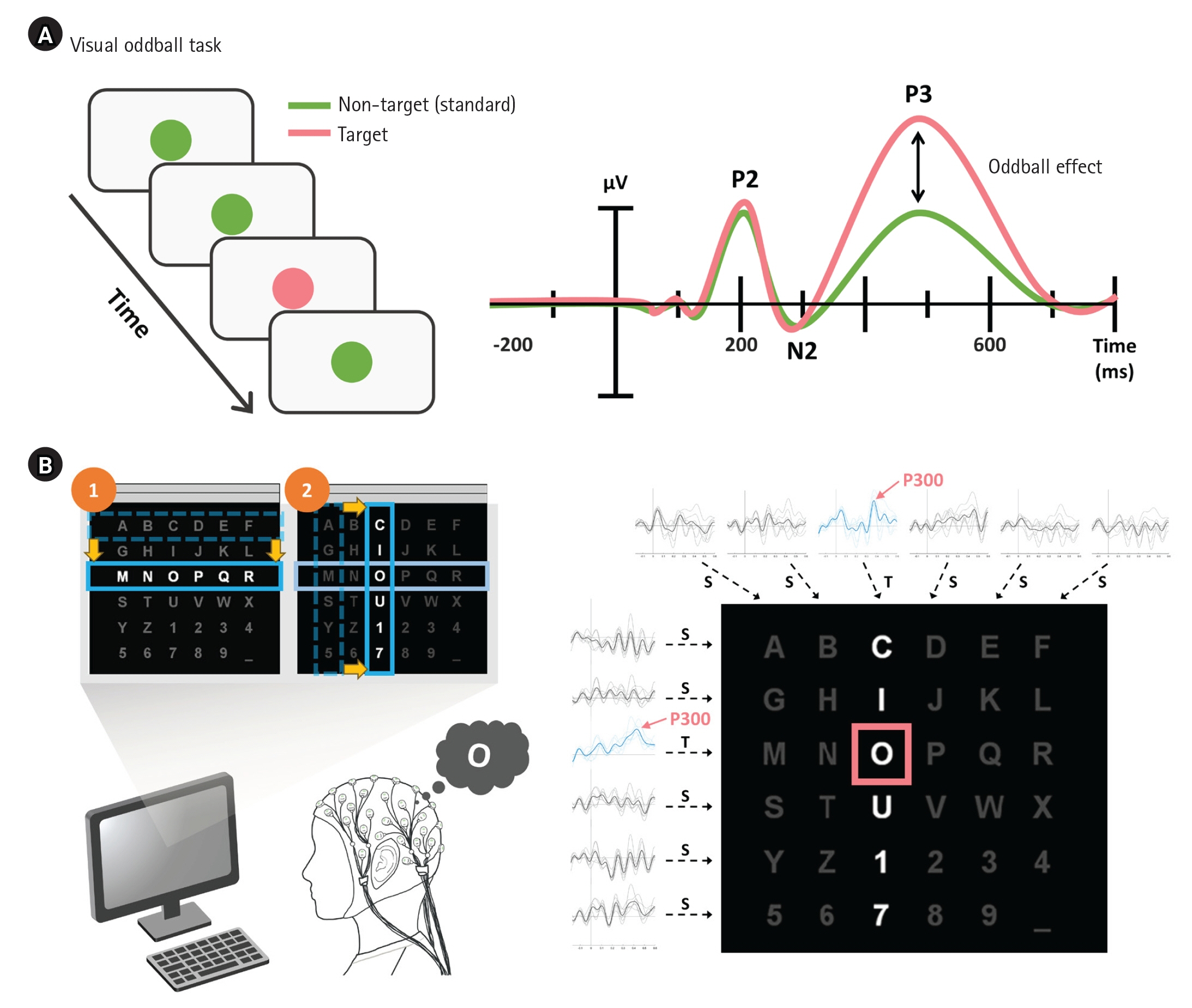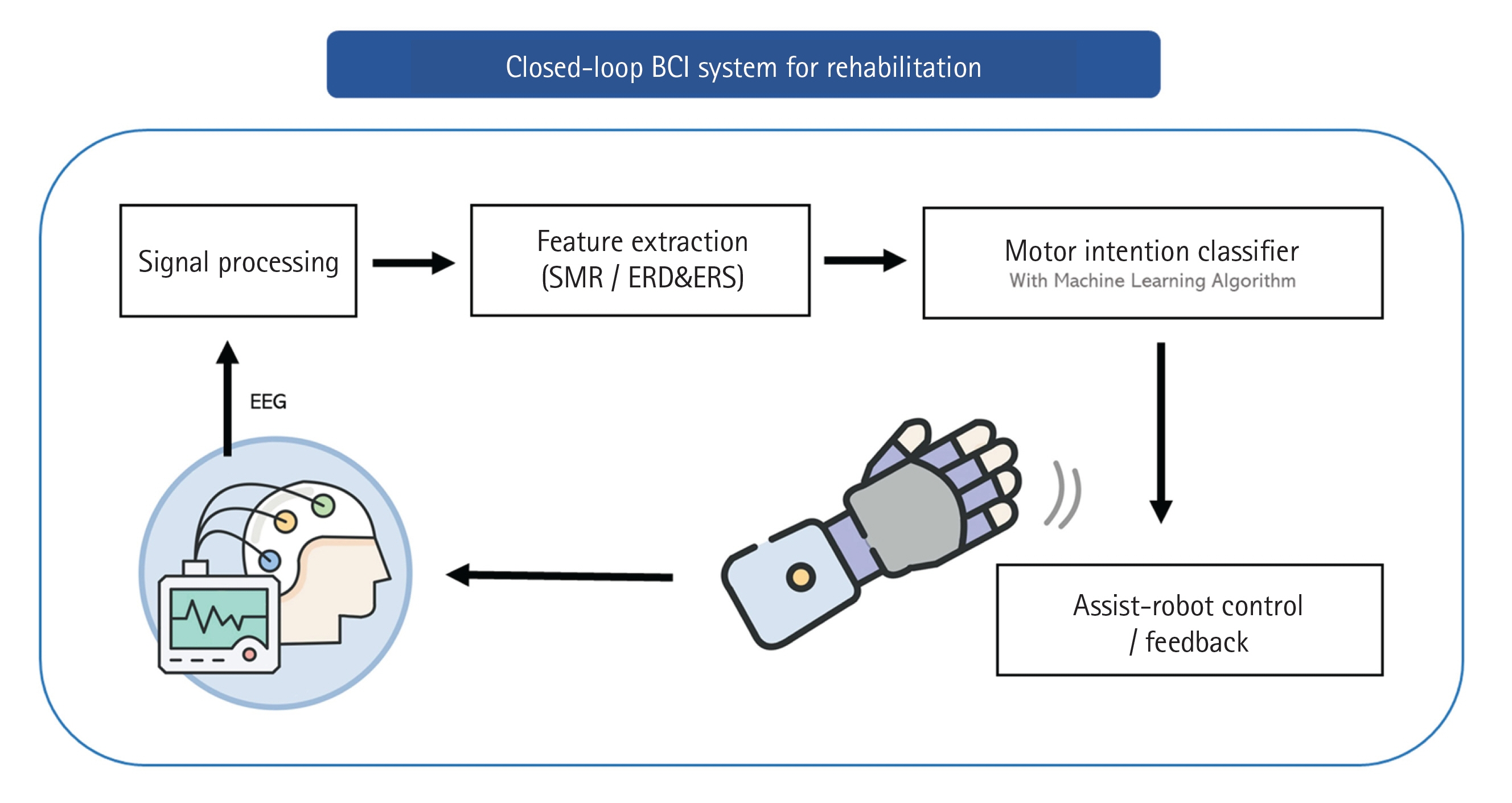Acute Crit Care.
2024 Feb;39(1):24-33. 10.4266/acc.2023.01382.
Brain–computer interface in critical care and rehabilitation
- Affiliations
-
- 1Department of Biomedical Engineering, Ulsan National Institute of Science and Technology (UNIST), Ulsan, Korea
- 2Department of Mechanical Engineering, Sungkyunkwan University, Suwon, Korea
- KMID: 2555221
- DOI: http://doi.org/10.4266/acc.2023.01382
Abstract
- This comprehensive review explores the broad landscape of brain–computer interface (BCI) technology and its potential use in intensive care units (ICUs), particularly for patients with motor impairments such as quadriplegia or severe brain injury. By employing brain signals from various sensing techniques, BCIs offer enhanced communication and motor rehabilitation strategies for patients. This review underscores the concept and efficacy of noninvasive, electroencephalogram-based BCIs in facilitating both communicative interactions and motor function recovery. Additionally, it highlights the current research gap in intuitive “stop” mechanisms within motor rehabilitation protocols, emphasizing the need for advancements that prioritize patient safety and individualized responsiveness. Furthermore, it advocates for more focused research that considers the unique requirements of ICU environments to address the challenges arising from patient variability, fatigue, and limited applicability of current BCI systems outside of experimental settings.
Keyword
Figure
Reference
-
1. Happ MB. Interpretation of nonvocal behavior and the meaning of voicelessness in critical care. Soc Sci Med. 2000; 50:1247–55.
Article2. Carroll SM. Nonvocal ventilated patients perceptions of being understood. West J Nurs Res. 2004; 26:85–103.
Article3. Leathart AJ. Communication and socialisation (1): an exploratory study and explanation for nurse-patient communication in an ITU. Intensive Crit Care Nurs. 1994; 10:93–104.
Article4. Menzel LK. Factors related to the emotional responses of intubated patients to being unable to speak. Heart Lung. 1998; 27:245–52.
Article5. Eliseyev A, Gonzales IJ, Le A, Doyle K, Egbebike J, Velazquez A, et al. Development of a brain-computer interface for patients in the critical care setting. PLoS One. 2021; 16:e0245540.
Article6. Jolley SE, Bunnell AE, Hough CL. ICU-acquired weakness. Chest. 2016; 150:1129–40.
Article7. Vanhorebeek I, Latronico N, Van den Berghe G. ICU-acquired weakness. Intensive Care Med. 2020; 46:637–53.
Article8. Frolov AA, Bobrov PD. Brain-computer interfaces: neurophysiological bases and clinical applications. Neurosci Behav Physiol. 2018; 48:1033–40.
Article9. Boto E, Holmes N, Leggett J, Roberts G, Shah V, Meyer SS, et al. Moving magnetoencephalography towards real-world applications with a wearable system. Nature. 2018; 555:657–61.
Article10. Daly JJ, Wolpaw JR. Brain-computer interfaces in neurological rehabilitation. Lancet Neurol. 2008; 7:1032–43.
Article11. Cervera MA, Soekadar SR, Ushiba J, Millán JD, Liu M, Birbaumer N, et al. Brain-computer interfaces for post-stroke motor rehabilitation: a meta-analysis. Ann Clin Transl Neurol. 2018; 5:651–63.
Article12. Ang KK, Guan C, Chua KS, Ang BT, Kuah C, Wang C, et al. A clinical study of motor imagery-based brain-computer interface for upper limb robotic rehabilitation. Annu Int Conf IEEE Eng Med Biol Soc. 2009; 2009:5981–4.13. Cheng N, Phua KS, Lai HS, Tam PK, Tang KY, Cheng KK, et al. Brain-computer interface-based soft robotic glove rehabilitation for stroke. IEEE Trans Biomed Eng. 2020; 67:3339–51.
Article14. Wolpaw JR, Birbaumer N, McFarland DJ, Pfurtscheller G, Vaughan TM. Brain-computer interfaces for communication and control. Clin Neurophysiol. 2002; 113:767–91.
Article15. Kübler A, Kotchoubey B, Kaiser J, Wolpaw JR, Birbaumer N. Brain-computer communication: unlocking the locked in. Psychol Bull. 2001; 127:358–75.
Article16. Hochberg LR, Serruya MD, Friehs GM, Mukand JA, Saleh M, Caplan AH, et al. Neuronal ensemble control of prosthetic devices by a human with tetraplegia. Nature. 2006; 442:164–71.
Article17. Tankus A, Fried I, Shoham S. Structured neuronal encoding and decoding of human speech features. Nat Commun. 2012; 3:1015.
Article18. Willett FR, Kunz EM, Fan C, Avansino DT, Wilson GH, Choi EY, et al. A high-performance speech neuroprosthesis. Nature. 2023; 620:1031–6.
Article19. Dougherty MP, Poch AM, Chorich LP, Hawkins ZA, Xu H, Roman RA, et al. Unexplained female infertility associated with genetic disease variants. N Engl J Med. 2023; 388:1055–6.
Article20. Edlow BL, Fecchio M, Bodien YG, Comanducci A, Rosanova M, Casarotto S, et al. Measuring consciousness in the intensive care unit. Neurocrit Care. 2023; 38:584–90.
Article21. Claassen J, Doyle K, Matory A, Couch C, Burger KM, Velazquez A, et al. Detection of brain activation in unresponsive patients with acute brain injury. N Engl J Med. 2019; 380:2497–505.
Article22. Egbebike J, Shen Q, Doyle K, Der-Nigoghossian CA, Panicker L, Gonzales IJ, et al. Cognitive-motor dissociation and time to functional recovery in patients with acute brain injury in the USA: a prospective observational cohort study. Lancet Neurol. 2022; 21:704–13.
Article23. Dehzangi O, Farooq M. Portable brain-computer interface for the intensive care unit patient communication using subject-dependent SSVEP identification. Biomed Res Int. 2018; 2018:9796238.
Article24. Zhang R, Xu Z, Zhang L, Cao L, Hu Y, Lu B, et al. The effect of stimulus number on the recognition accuracy and information transfer rate of SSVEP-BCI in augmented reality. J Neural Eng. 2022; 19:036010.
Article25. Ladouce S, Darmet L, Torre Tresols JJ, Velut S, Ferraro G, Dehais F. Improving user experience of SSVEP BCI through low amplitude depth and high frequency stimuli design. Sci Rep. 2022; 12:8865.
Article26. Peters B, Bedrick S, Dudy S, Eddy B, Higger M, Kinsella M, et al. SSVEP BCI and eye tracking use by individuals with late-stage ALS and visual impairments. Front Hum Neurosci. 2020; 14:595890.
Article27. Siribunyaphat N, Punsawad Y. Steady-state visual evoked potential-based brain-computer interface using a novel visual stimulus with quick response (QR) code pattern. Sensors (Basel). 2022; 22:1439.
Article28. Farwell LA, Donchin E. Talking off the top of your head: toward a mental prosthesis utilizing event-related brain potentials. Electroencephalogr Clin Neurophysiol. 1988; 70:510–23.
Article29. Guan C, Thulasidas M, Wu J. High performance P300 speller for brain-computer interface. In : IEEE International Workshop on Biomedical Circuits and Systems; 2004 Dec 1-3; Singapore. p. S3/5/INV–S3/13.
Article30. Pan J, Chen X, Ban N, He J, Chen J, Huang H. Advances in P300 brain-computer interface spellers: toward paradigm design and performance evaluation. Front Hum Neurosci. 2022; 16:1077717.
Article31. Pan J, Li Y, Gu Z, Yu Z. A comparison study of two P300 speller paradigms for brain-computer interface. Cogn Neurodyn. 2013; 7:523–9.
Article32. Guy V, Soriani MH, Bruno M, Papadopoulo T, Desnuelle C, Clerc M. Brain computer interface with the P300 speller: usability for disabled people with amyotrophic lateral sclerosis. Ann Phys Rehabil Med. 2018; 61:5–11.
Article33. Miao Y, Yin E, Allison BZ, Zhang Y, Chen Y, Dong Y, et al. An ERP-based BCI with peripheral stimuli: validation with ALS patients. Cogn Neurodyn. 2020; 14:21–33.
Article34. Jalilpour S, Hajipour Sardouie S, Mijani A. A novel hybrid BCI speller based on RSVP and SSVEP paradigm. Comput Methods Programs Biomed. 2020; 187:105326.
Article35. Santamaria-Vazquez E, Martinez-Cagigal V, Gomez-Pilar J, Hornero R. Asynchronous control of ERP-based BCI spellers using steady-state visual evoked potentials elicited by peripheral stimuli. IEEE Trans Neural Syst Rehabil Eng. 2019; 27:1883–92.
Article36. Lu Z, Li Q, Gao N, Yang J, Bai O. A novel audiovisual P300-speller paradigm based on cross-modal spatial and semantic congruence. Front Neurosci. 2019; 13:1040.
Article37. Pires G, Barbosa S, Nunes UJ, Gonçalves E. Visuo-auditory stimuli with semantic, temporal and spatial congruence for a P300-based BCI: an exploratory test with an ALS patient in a completely locked-in state. J Neurosci Methods. 2022; 379:109661.
Article38. Korkmaz OE, Aydemir O, Oral EA, Ozbek IY. An efficient 3D column-only P300 speller paradigm utilizing few numbers of electrodes and flashings for practical BCI implementation. PLoS One. 2022; 17:e0265904.
Article39. Noorzadeh S, Rivet B, Jutten C. 3-D Interface for the P300 speller BCI. IEEE Trans Hum Mach Syst. 2020; 50:604–12.
Article40. Li R, Song WQ, Du JB, Huo S, Shan GX. Connecting the P300 to the diagnosis and prognosis of unconscious patients. Neural Regen Res. 2015; 10:473–80.
Article41. Rao RP. Brain-computer interfacing: an introduction. Cambridge University Press;2013.42. Yu Y, Zhou Z, Liu Y, Jiang J, Yin E, Zhang N, et al. Self-paced operation of a wheelchair based on a hybrid brain-computer interface combining motor imagery and P300 potential. IEEE Trans Neural Syst Rehabil Eng. 2017; 25:2516–26.
Article43. Liu Y, Liu Y, Tang J, Yin E, Hu D, Zhou Z. A self-paced BCI prototype system based on the incorporation of an intelligent environment-understanding approach for rehabilitation hospital environmental control. Comput Biol Med. 2020; 118:103618.
Article44. Schalk G, McFarland DJ, Hinterberger T, Birbaumer N, Wolpaw JR. BCI2000: a general-purpose brain-computer interface (BCI) system. IEEE Trans Biomed Eng. 2004; 51:1034–843.
Article45. Ang KK, Guan C, Phua KS, Wang C, Zhao L, Teo WP, et al. Facilitating effects of transcranial direct current stimulation on motor imagery brain-computer interface with robotic feedback for stroke rehabilitation. Arch Phys Med Rehabil. 2015; 96(3 Suppl):S79–87.
Article46. Benzy VK, Vinod AP, Subasree R, Alladi S, Raghavendra K. Motor imagery hand movement direction decoding using brain computer interface to aid stroke recovery and rehabilitation. IEEE Trans Neural Syst Rehabil Eng. 2020; 28:3051–62.
Article47. Chatelle C, Spencer CA, Cash SS, Hochberg LR, Edlow BL. Feasibility of an EEG-based brain-computer interface in the intensive care unit. Clin Neurophysiol. 2018; 129:1519–25.
Article48. Höhne J, Holz E, Staiger-Sälzer P, Müller KR, Kübler A, Tangermann M. Motor imagery for severely motor-impaired patients: evidence for brain-computer interfacing as superior control solution. PLoS One. 2014; 9:e104854.
Article49. Amin SU, Alsulaiman M, Muhammad G, Mekhtiche MA, Hossain MS. Deep learning for EEG motor imagery classification based on multi-layer CNNs feature fusion. Future Gener Comput Syst. 2019; 101:542–54.
Article50. Chen Z, Wang Y, Song Z. Classification of motor imagery electroencephalography signals based on image processing method. Sensors (Basel). 2021; 21:4646.
Article51. Dong E, Li C, Li L, Du S, Belkacem AN, Chen C. Classification of multi-class motor imagery with a novel hierarchical SVM algorithm for brain-computer interfaces. Med Biol Eng Comput. 2017; 55:1809–18.
Article52. León J, Escobar JJ, Ortiz A, Ortega J, González J, Martín-Smith P, et al. Deep learning for EEG-based Motor Imagery classification: accuracy-cost trade-off. PLoS One. 2020; 15:e0234178.
Article53. Cantillo-Negrete J, Carino-Escobar RI, Carrillo-Mora P, Barraza-Madrigal JA, Arias-Carrión O. Robotic orthosis compared to virtual hand for Brain-Computer Interface feedback. Biocybern Biomed Eng. 2019; 39:263–72.
Article54. Cantillo-Negrete J, Carino-Escobar RI, Carrillo-Mora P, Rodriguez-Barragan MA, Hernandez-Arenas C, Quinzaños-Fresnedo J, et al. Brain-computer interface coupled to a robotic hand orthosis for stroke patients’ neurorehabilitation: a crossover feasibility study. Front Hum Neurosci. 2021; 15:656975.
Article55. Spüler M, López-Larraz E, Ramos-Murguialday A. On the design of EEG-based movement decoders for completely paralyzed stroke patients. J Neuroeng Rehabil. 2018; 15:110.
Article56. Karimi F, Kofman J, Mrachacz-Kersting N, Farina D, Jiang N. Detection of movement related cortical potentials from EEG using constrained ICA for brain-computer interface applications. Front Neurosci. 2017; 11:356.
Article57. Shibasaki H, Barrett G, Halliday E, Halliday AM. Cortical potentials associated with voluntary foot movement in man. Electroencephalogr Clin Neurophysiol. 1981; 52:507–16.
Article58. Shakeel A, Navid MS, Anwar MN, Mazhar S, Jochumsen M, Niazi IK. A review of techniques for detection of movement intention using movement-related cortical potentials. Comput Math Methods Med. 2015; 2015:346217.
Article59. Shibasaki H, Hallett M. What is the Bereitschaftspotential? Clin Neurophysiol. 2006; 117:2341–56.
Article60. Berchicci M, Menotti F, Macaluso A, Di Russo F. The neurophysiology of central and peripheral fatigue during sub-maximal lower limb isometric contractions. Front Hum Neurosci. 2013; 7:135.
Article61. Schillings ML, Kalkman JS, van der Werf SP, Bleijenberg G, van Engelen BG, Zwarts MJ. Central adaptations during repetitive contractions assessed by the readiness potential. Eur J Appl Physiol. 2006; 97:521–6.
Article62. de Morree HM, Klein C, Marcora SM. Perception of effort reflects central motor command during movement execution. Psychophysiology. 2012; 49:1242–53.
Article63. Wiese H, Stude P, Sarge R, Nebel K, Diener HC, Keidel M. Reorganization of motor execution rather than preparation in poststroke hemiparesis. Stroke. 2005; 36:1474–9.
Article64. Berchicci M, Quinzi F, Dainese A, Di Russo F. Time-source of neural plasticity in complex bimanual coordinative tasks: juggling. Behav Brain Res. 2017; 328:87–94.
Article65. Jochumsen M, Rovsing C, Rovsing H, Cremoux S, Signal N, Allen K, et al. Quantification of movement-related EEG correlates associated with motor training: a study on movement-related cortical potentials and sensorimotor rhythms. Front Hum Neurosci. 2017; 11:604.
Article66. Xu R, Jiang N, Vuckovic A, Hasan M, Mrachacz-Kersting N, Allan D, et al. Movement-related cortical potentials in paraplegic patients: abnormal patterns and considerations for BCI-rehabilitation. Front Neuroeng. 2014; 7:35.
Article67. Yuan H, Liu T, Szarkowski R, Rios C, Ashe J, He B. Negative covariation between task-related responses in alpha/beta-band activity and BOLD in human sensorimotor cortex: an EEG and fMRI study of motor imagery and movements. Neuroimage. 2010; 49:2596–606.
Article68. Yuan H, He B. Brain-computer interfaces using sensorimotor rhythms: current state and future perspectives. IEEE Trans Biomed Eng. 2014; 61:1425–35.
Article69. Tsuchimoto S, Shibusawa S, Mizuguchi N, Kato K, Ebata H, Liu M, et al. Resting-state fluctuations of EEG sensorimotor rhythm reflect BOLD activities in the pericentral areas: a simultaneous EEG-fMRI study. Front Hum Neurosci. 2017; 11:356.
Article70. Okada S, Urakami Y, Kato T, Tsuji M, Inoue R. The Rolandic mu rhythm: a clinical study of the atypical group. Clin Electroencephalogr. 1992; 23:10–8.
Article71. Pfurtscheller G, Lopes da Silva FH. Event-related EEG/MEG synchronization and desynchronization: basic principles. Clin Neurophysiol. 1999; 110:1842–57.
Article72. Pfurtscheller G, Brunner C, Schlögl A, Lopes da Silva FH. Mu rhythm (de)synchronization and EEG single-trial classification of different motor imagery tasks. Neuroimage. 2006; 31:153–9.
Article73. Nann M, Peekhaus N, Angerhöfer C, Soekadar SR. Feasibility and safety of bilateral hybrid EEG/EOG brain/neural-machine interaction. Front Hum Neurosci. 2020; 14:580105.
Article74. Araujo RS, Silva CR, Netto SP, Morya E, Brasil FL. Development of a low-cost EEG-controlled hand exoskeleton 3D printed on textiles. Front Neurosci. 2021; 15:661569.
Article75. Massardi S, Pinto-Fernandez D, Babič J, Dežman M, Trošt A, Grosu V, et al. Relevance of hazards in exoskeleton applications: a survey-based enquiry. J Neuroeng Rehabil. 2023; 20:68.
Article76. Onose G, Grozea C, Anghelescu A, Daia C, Sinescu CJ, Ciurea AV, et al. On the feasibility of using motor imagery EEG-based brain-computer interface in chronic tetraplegics for assistive robotic arm control: a clinical test and long-term post-trial follow-up. Spinal Cord. 2012; 50:599–608.
Article77. Long J, Li Y, Wang H, Yu T, Pan J, Li F. A hybrid brain computer interface to control the direction and speed of a simulated or real wheelchair. IEEE Trans Neural Syst Rehabil Eng. 2012; 20:720–9.
Article78. Yu Y, Liu Y, Jiang J, Yin E, Zhou Z, Hu D. An asynchronous control paradigm based on sequential motor imagery and its application in wheelchair navigation. IEEE Trans Neural Syst Rehabil Eng. 2018; 26:2367–75.
Article
- Full Text Links
- Actions
-
Cited
- CITED
-
- Close
- Share
- Similar articles
-
- Brain-machine Interface in Robot-assisted Neurorehabilitation for Patients with Stroke and Upper Extremity Weakness – the Therapeutic Turning Point
- Illiteracy of Brain-Computer Interface
- Rehabilitation and Intensive Care Unit
- Manipulation Performance and Satisfaction of the Computer Mouse Interface in the Cervical Spinal Cord Injury Patients
- The Selection of the Appropriate Computer Interface Device for Patients With High Cervical Cord Injury





